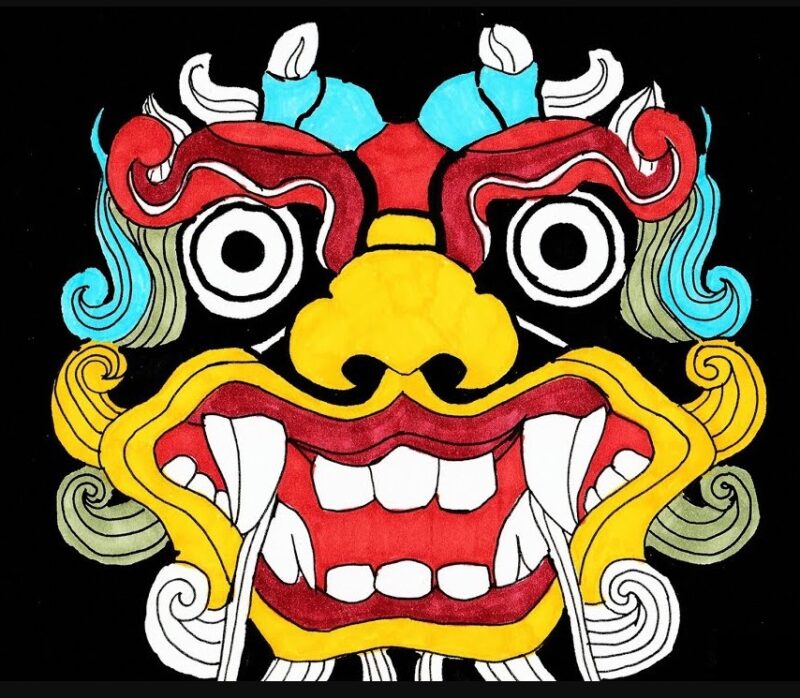The Dokkaebi are some of the most well-known figures in Korean folklore. They’re often depicted as goblin-like creatures with a love for playing tricks on humans.
These stories, which have been passed down for generations, show Dokkaebi as both mischievous pranksters and protectors of nature.
There are a lot of legends about them, each highlighting different aspects of their character and powers.
Below is a list of 17 myths and legends that capture the essence of these fascinating beings.
Most Popular Myths and Legends
- The Dokkaebi’s Magical Club (Bangmangi)
- The Invisibility Hat (Gamtu)
- Dokkaebi and the Woodcutter
- The Dokkaebi’s Dance
- Guardians of Nature
- Wrestling (Ssireum)
- Illusions
- Moral Enforcers
- Origin from Objects
- The Dokkaebi Bride
- Dokkaebi and the Full Moon
- Connection with Restless Spirits
- The Revenge
- The Fire
- The Feast
- Link to Fertility Rituals
- Weather Control
1. The Magical Club (Bangmangi)

Dokkaebi are often depicted with a magical club called a bangmangi. This club allows them to summon objects or grant wishes. In many tales, humans try to steal this club to gain wealth or power.
However, they are clever, and those who attempt to outsmart them often find themselves tricked instead.
Fun Fact: The bangmangi isn’t just for summoning objects. In some stories, it’s used to test the character of humans. Those who are greedy or selfish often end up cursed rather than blessed.
The idea of a magical club appears in various cultures, but in Korean folklore, it’s particularly associated with the Dokkaebi. The bangmangi reflects their dual nature: it can bring great fortune but also disaster, depending on how it’s used.
2. The Invisibility Hat (Gamtu)
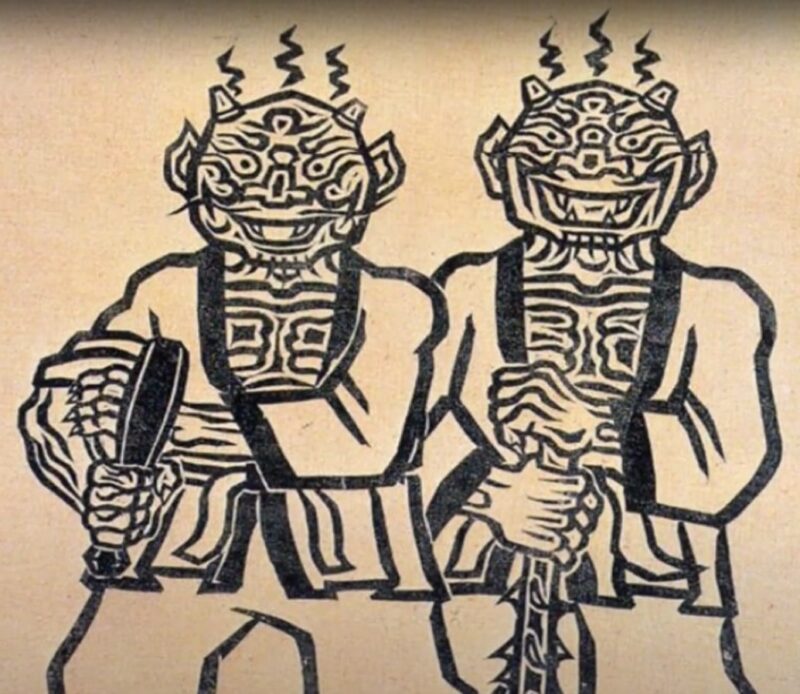
Another famous item associated with them is the gamtu, a hat that grants invisibility to whoever wears it. Dokkaebi use this hat to sneak around and play pranks on humans.
There are tales where clever individuals manage to steal the hat and use it to their advantage, but usually, the deities reclaim their lost item through some trickery.
Fun Fact: The gamtu has become so iconic in Korean folklore that it’s often referenced in other stories, including modern Korean dramas and comics.
The concept of an invisibility-granting object is common in many mythologies, but the gamtu is uniquely tied to the Dokkaebi. It symbolizes the unseen forces of nature that Dokkaebi represent, blending the magical with the mundane.
3. Dokkaebi and the Woodcutter
One of the most famous stories involves a poor woodcutter who encounters this being in the forest. The Dokkaebi offers him three wishes, but the woodcutter must use his wit to ensure he isn’t tricked.
These tales often end with the woodcutter outsmarting the deity and living a prosperous life.
Fun Fact: This story is so popular in Korea that it’s been adapted into children’s books, plays, and even animated films. It’s a classic example of the “trickster” motif in folklore.
The woodcutter story is a reflection of the values of humility and cleverness in Korean culture. It teaches that wit and good intentions can overcome even the most mischievous challenges.
4. The Dokkaebi’s Dance
Dokkaebi are said to love dancing, often holding nighttime parties in secluded areas. They sometimes invite humans to join in their dance, but there’s always a catch.
Those who accept might find themselves transported to another realm or wake up to strange consequences the next day.
Fun Fact: The idea of dancing with supernatural beings is not unique to Korean folklore. Many cultures have similar stories where joining in a dance with magical creatures leads to unexpected results.
It’s a metaphor for how easily humans can be drawn into situations beyond their control, especially when tempted by the supernatural.
5. Guardians of Nature

Dokkaebi are not just tricksters; they are also guardians of nature. In many stories, they protect the natural environment, punishing those who harm the forests, mountains, and rivers.
People who show respect and care for nature often receive blessings from the Dokkaebi, such as good harvests or protection from disasters.
Fun Fact: In some regions of Korea, it’s believed that if you hear mysterious laughter while walking in the woods, it might be a Dokkaebi watching over the area.
The role as nature guardians highlights the deep connection between Korean folklore and the environment. These stories serve as reminders of the importance of respecting nature, a value deeply rooted in Korean culture.
6. Wrestling (Ssireum)
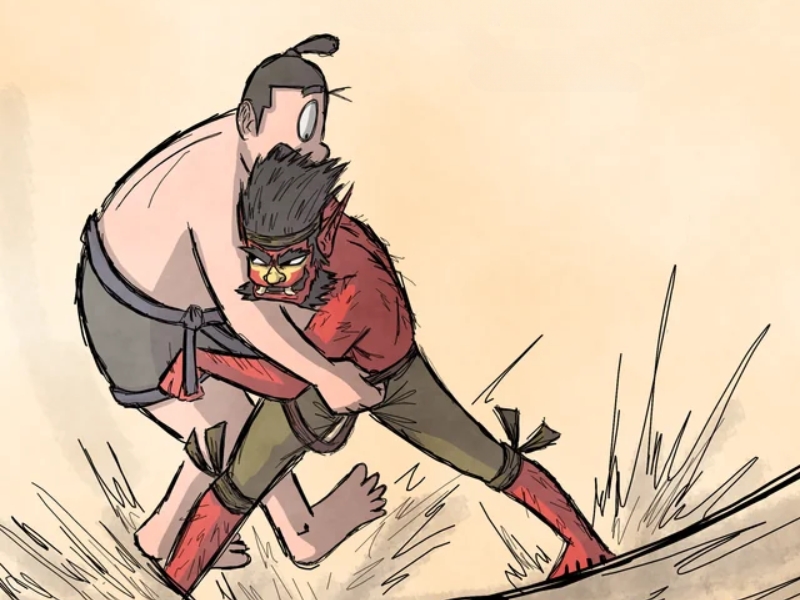
Dokkaebi are known to enjoy a good wrestling match, particularly a traditional Korean form of wrestling called Ssireum. They often challenge humans to wrestling matches, and those who manage to defeat a Dokkaebi are usually rewarded with wealth or other gifts.
However, losing to a Dokkaebi can lead to some form of punishment or trickery.
Fun Fact: Wrestling with a Dokkaebi is seen as a test of both physical strength and cleverness, as the Dokkaebi often use tricks to win.
7. Illusions

Dokkaebi are masters of illusion. They can create elaborate scenarios that deceive humans, leading them astray or making them question their own senses.
These illusions are often used to teach a lesson or as a form of playful trickery. In some stories, Dokkaebi create entire phantom landscapes or false treasures to confuse and challenge humans.
Fun Fact: One famous illusion involves a Dokkaebi making a person believe they have received a chest of gold, only for it to turn into leaves or stones when they get home.
8. Moral Enforcers
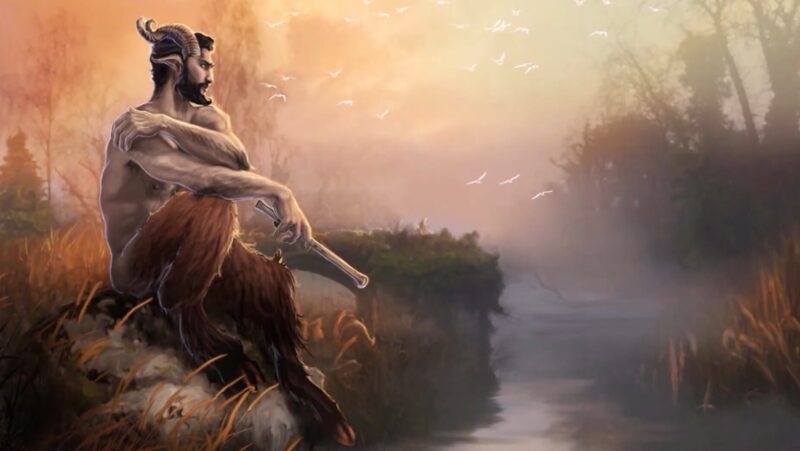
In many stories, Dokkaebi act as moral enforcers, punishing the wicked and rewarding the virtuous. They are known to appear to those who have wronged others, demanding retribution, or creating situations that force the guilty to confess.
Conversely, those who are kind, honest, and respectful often find themselves unexpectedly blessed by a Dokkaebi.
Fun Fact: In some tales, Dokkaebi will appear in dreams to warn people about the consequences of their immoral actions.
9. Origin from Objects
According to some legends, Dokkaebi are created from old, discarded objects that have absorbed human emotions or, in some cases, blood. These objects, like old brooms, jars, or even pieces of furniture, come to life as Dokkaebi.
This origin story adds an eerie aspect to the creatures, as ordinary household items can potentially transform into these mischievous beings.
Fun Fact: In Korean households, it’s considered bad luck to treat old objects with disrespect, as they might turn into Dokkaebi after being discarded.
10. The Dokkaebi Bride
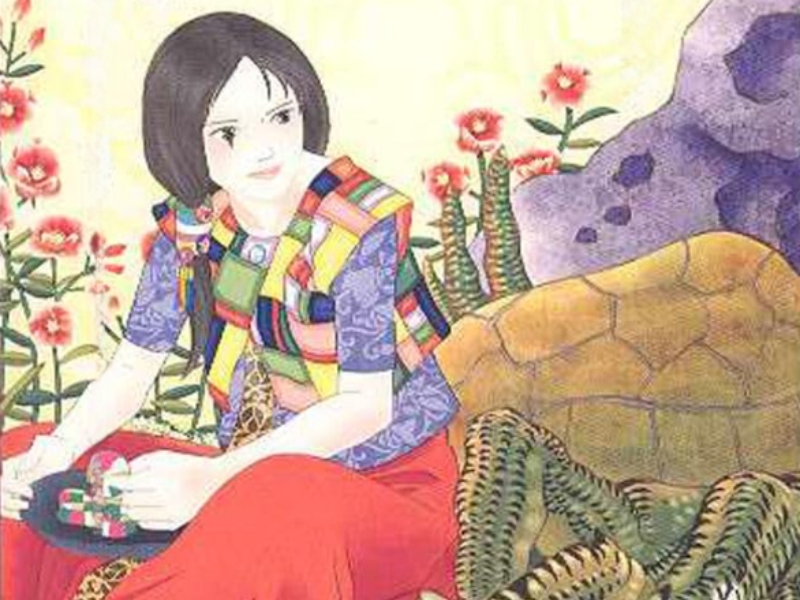
In some stories, Dokkaebi seek out human brides. These tales often involve a Dokkaebi falling in love with a human woman and trying to win her hand in marriage.
The only way for a Dokkaebi to become mortal is by marrying a human, but these marriages are usually fraught with challenges, as the Dokkaebi’s mischievous nature makes it difficult for them to live harmoniously with humans.
Fun Fact: There are tales where the Dokkaebi’s bride eventually tames the creature, turning it into a helpful and protective spirit instead of a trickster.
The concept of supernatural beings marrying humans is common in folklore worldwide, symbolizing the union of the mundane and the magical. In Korean culture, these stories often reflect the struggles of maintaining balance between different worlds.
11. Dokkaebi and the Full Moon
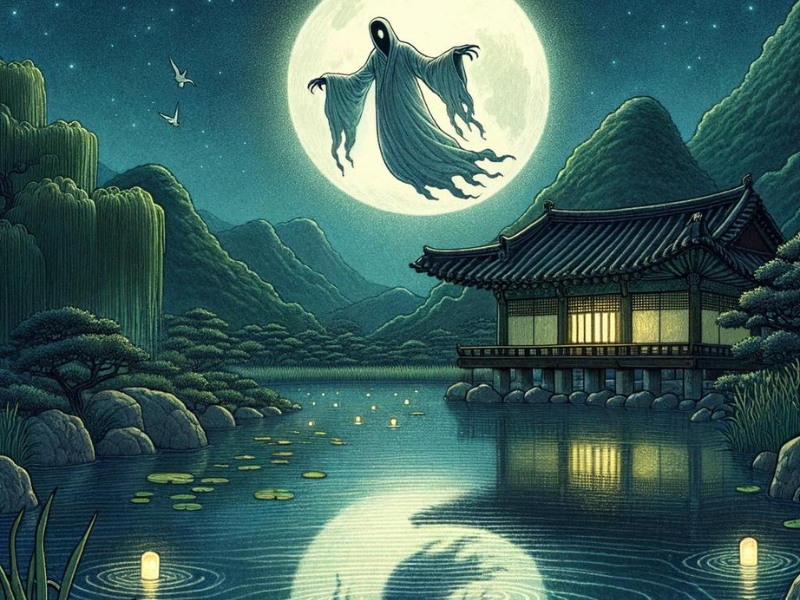
Dokkaebi are believed to be most powerful during the full moon. On these nights, they are said to gather in remote areas to hold celebrations, play games, and create mischief.
Humans are advised to avoid wandering alone during a full moon, as they might encounter a Dokkaebi and be drawn into their antics.
Fun Fact: In some rural areas, it’s still considered unwise to venture out on nights with a full moon, due to the lingering belief in Dokkaebi activity.
12. Connection with Restless Spirits
Some legends suggest that Dokkaebi are the spirits of those who died with unresolved issues. These restless spirits transform into Dokkaebi, seeking resolution or closure.
They may linger around places of their death or places tied to their regrets, causing mischief or helping others in their own peculiar ways.
Fun Fact: This belief has led to various rituals in Korean culture aimed at helping spirits find peace, thus preventing them from becoming Dokkaebi.
The idea of spirits transforming into mischievous beings if not properly laid to rest is prevalent in many cultures. In Korea, this belief underscores the importance of proper funeral rites and respect for the deceased.
13. The Revenge
Dokkaebi are known to be vengeful spirits, especially when they have been wronged. In one common tale, a greedy man steals from a Dokkaebi and is subsequently cursed with bad luck and ailments.
These curses are often irreversible and can extend to the person’s descendants, serving as a warning against greed and dishonesty.
Fun Fact: In some stories, Dokkaebi will offer the cursed person a chance to redeem themselves, but only through performing difficult or humiliating tasks.
14. The Fire
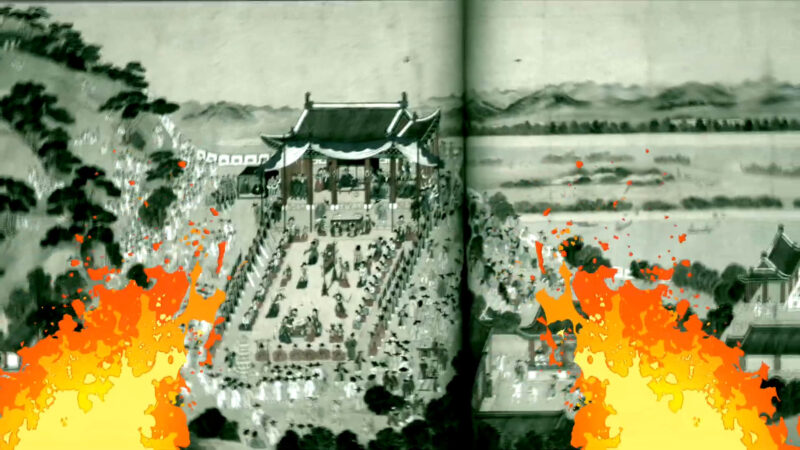
Dokkaebi are sometimes depicted as having control over fire, particularly a mysterious blue flame that they can summon at will. This flame is often used to scare away intruders or to light up their gatherings at night.
There are also stories where the flame acts as a guide, leading travelers safely through dangerous terrain.
Fun Fact: Seeing a blue flame in the wilderness is considered a sign of a nearby Dokkaebi. Depending on the context, this could mean good fortune or danger.
Fire, particularly in the form of a mystical or guiding light, is a recurring symbol in many mythologies.
15. The Feast
Dokkaebi are known to hold lavish feasts deep in the mountains or forests. These feasts are filled with food, drink, and music, all conjured by the Dokkaebi’s magic.
Humans who stumble upon these feasts are often invited to join, but the outcome is unpredictable. Some leave with great wealth, while others find that the food turns to leaves or dirt as soon as they leave its presence.
Fun Fact: In some versions of the legend, a human who refuses the Dokkaebi’s invitation to feast is punished, while those who partake politely are rewarded.
The idea of magical feasts is common in folklore around the world, often representing the temptation of easy wealth or pleasure, which usually comes with hidden dangers. In Korean culture, these stories highlight the importance of humility and respect.
16. Link to Fertility Rituals
Dokkaebi are sometimes invoked in fertility rituals to ensure a good harvest or the birth of healthy children. In these stories, offerings are made to these beings, who, if pleased, will bless the land or the family with abundance.
However, if the rituals are not performed correctly, the Dokkaebi might become angry and bring about misfortune instead.
Fun Fact: These fertility rituals often involve offerings of rice cakes, alcohol, and other traditional foods, which are left in natural settings like forests or near rivers where Dokkaebi are believed to reside.
17. Weather Control
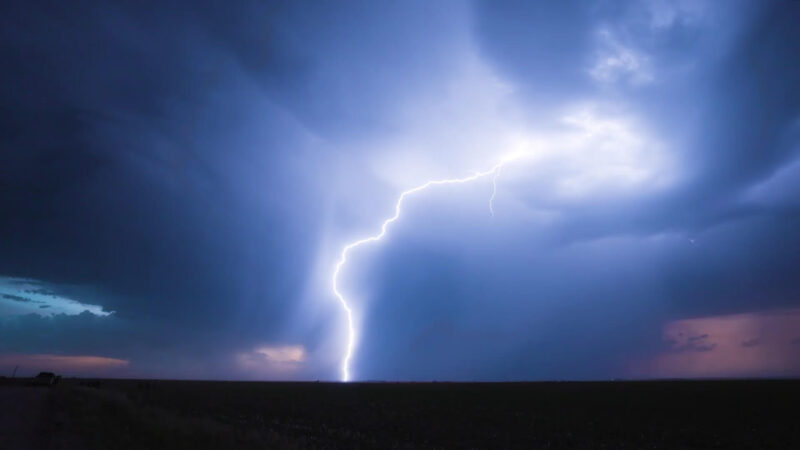
Dokkaebi are believed to have control over the weather, especially in bringing rain or storms. They can summon rain to nourish the crops or unleash storms as a form of punishment.
Farmers would often pray to them for favorable weather during planting and harvest seasons, believing that these spirits had the power to influence the elements.
Fun Fact: In some tales, Dokkaebi will only grant good weather if they are entertained by music, dancing, or storytelling, reflecting their love of festivities.
The belief in weather-controlling deities or spirits is found in many cultures.
FAQs
How do you summon a Dokkaebi?
There isn’t a specific method to summon a Dokkaebi since they appear at their own will, often in places where nature is undisturbed. However, certain legends suggest that they can be attracted by performing rituals, offering food, or showing respect to nature.
What do Dokkaebi look like?
Dokkaebi are usually depicted as goblin-like creatures with a grotesque appearance, including features like horns, sharp teeth, and sometimes one eye. They often wear animal skins or old-fashioned Korean clothing and are associated with blue flames.
Are Dokkaebi evil?
Dokkaebi are not inherently evil. They are tricksters who enjoy playing pranks on humans, but they also have a protective side. They punish the wicked and reward the kind, making them complex characters in Korean folklore.
Can Dokkaebi grant wishes?
Yes, many legends describe Dokkaebi as beings who can grant wishes, usually through their magical club (bangmangi). However, these wishes often come with a catch, and those who receive them must be careful not to incur the Dokkaebi’s wrath.
Why do Dokkaebi like wrestling?
Dokkaebi are known to enjoy wrestling, particularly a traditional Korean style called Ssireum. This is seen as a test of both strength and wit, with those who can outsmart or defeat a Dokkaebi often receiving rewards.
What should you do if you meet a Dokkaebi?
If you meet a Dokkaebi, it’s best to be polite and respectful. Engaging with them can lead to rewards, but trying to trick or outsmart them could result in misfortune. Some stories suggest that challenging them to a game or offering them food might keep you safe.
How do Dokkaebi punish people?
Dokkaebi are known to punish those who are greedy, dishonest, or disrespectful to nature. Punishments can range from curses, bad luck, and illness to more severe consequences like lifelong misfortune that even extends to a person’s descendants.
What do Dokkaebi do during a full moon?
During a full moon, Dokkaebi are believed to be at their most powerful. They gather to hold feasts, play games, and cause mischief. It’s advised to avoid wandering alone at night during a full moon to steer clear of encountering them.
Last Words
Dokkaebi are more than just mythical creatures from Korean folklore. They represent the connection between humans and nature. The stories about them show how they can be playful, protective, and even act as moral guides.
These tales have been passed down through generations, making Dokkaebi a key part of Korean culture.

